Becomig A Student Leader: When I Decided To Be Hudson County Community College’s Computer Science Club President
In December 2016, during one of the many late-night study session at HCCC’s library in Journal Square, my classmate Obi approached me with a request to teach him iOS game development in Swift. This wasn’t the first time I’d been asked, and it sparked an idea: why not teach everyone who had shown interest?
Reviving the Computer Science Club
Obi, one of my classmate and a member of HCCC’s Student Government Association gave me the idea and nudged me to revive the dormant Computer Science Club at our college. He mentioned how forming a club would give us a dedicated classroom schedule and the ability to host official events on school grounds. That was enough to convince me and say “Sure, why not?” However, I faced my first bout of impostor syndrome – I didn’t know how to teach effectively, present to a group, or even feel confident in my coding skills. Despite these fears, I embraced the challenge.
Preparation and Planning
With an upcoming break from classes, I focused on improving my iOS game development skills and creating PowerPoint slides to aid in teaching. This process of preparing to teach others solidified my own knowledge even further.
Building the Team
Recognizing the need for support, I recruited Julian as my Vice President. Julian, whom I affectionately nicknamed “Seto Kaiba” due to his passion for wearing trench coats reminiscent of the Yu-Gi-Oh! character, brought a unique flair to our leadership team. His clear communication skills and distinctive style helped attract attention to our club. Together, we set out to gather the required signatures to start the club officially.
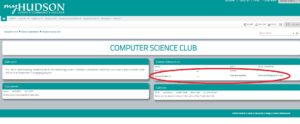
Official Launch and First Meeting
On January 25, 2017, the Computer Science Club was born, becoming official on HCCC’s website. Our first meeting, though small with only five attendees, was a success. Despite my nerves, I managed to present and explain coding concepts, demonstrating apps I had created.
Growing and Learning Together
As the semester progressed, word spread about our club’s activities and engaging meetings. Our membership grew steadily, reaching over 10 active members by mid-semester. This growth was a testament to the value we were providing and the enthusiasm we were generating for computer science on campus.
Overcoming Hurdles
We faced significant challenges throughout the semester. Despite our efforts, we never secured access to computer rooms with Macs, nor did we manage to get Xcode installed on the college’s computers until the very end of the semester. This meant that for the majority of our meetings and projects, we all shared my single 2009 MacBook. While this could have been a major setback, it actually became a unifying factor for our club. We huddled around the single machine, taking turns and collaborating closely on projects. This limitation forced us to be creative and work together more closely than we might have otherwise.
Despite these technical limitations, I would argue that we became the most active and engaging club on campus. Our focus on hands-on learning, rather than just socializing, set us apart. We managed to cover a wide range of topics and complete several projects, all while sharing a single development machine.
Hackathon Experience
As our coding skills improved, we attended Rutgers’ HackRU, with eight of our members participating. This 24-hour coding event was a transformative experience for our club. We arrived as a tight-knit group, excited but nervous about the challenge ahead. Throughout the night, we worked on our simple pong game, fueled by caffeine and the electric atmosphere of hundreds of students coding around us.
While our game didn’t win any prizes, the experience was invaluable. We learned about time management under pressure, the importance of clear communication in a team setting, and how to quickly learn and apply new technologies. The event also exposed us to a wider tech community, allowing us to network with students from other schools and even chat with industry professionals who were there as mentors or judges.
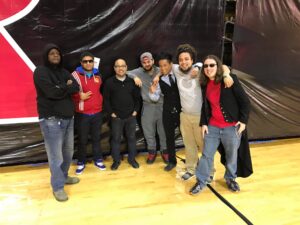
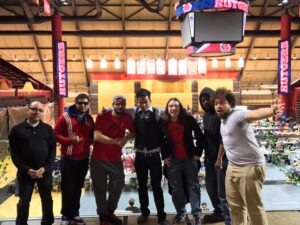
The camaraderie we built during those intense 24 hours lasted long after the event. We returned to HCCC with new ideas, increased confidence, and a shared experience that bonded us even more closely as a club.
Hosting College Events
Our club’s activities caught the attention of HCCC’s Student Activities department, leading to opportunities to host college-funded events. Our most successful event was the Game Day, organized in collaboration with the Gaming Club. This event showcased our ability to blend education with entertainment.
We started the event with a brief introduction to mobile game development, demonstrating how simple games like the one we created at HackRU could be made. The Gaming Club followed with a presentation on game history, providing context to the evolution of video games. The main attraction was the gaming tournament that followed, featuring popular titles that had students competing fiercely.
The event was a resounding success, attracting over 80 students and filling the entire student lounge. The atmosphere was electric, with cheers and excitement filling the air. While some students came for the free pizza and drinks, many stayed to learn about coding and game development. The tournament portion was particularly popular, with friendly rivalries forming and students from different majors mingling over their shared love of gaming.
This event not only raised the profile of our club but also demonstrated our ability to organize large-scale, engaging activities that appealed to a broad student base. It became a talking point on campus for weeks afterward and helped cement our reputation as one of the most active and fun clubs at HCCC.
National Recognition
Towards the end of the semester, our efforts as a club were recognized at the highest level. My Vice President Julian (aka “Seto Kaiba”) and I were honored with the prestigious “Who’s Who Among Students in American Universities & Colleges” award certification from HCCC. This recognition, bestowed upon a select few students, was presented during the Student Achievement & Excellence Awards Ceremony.
The “Who’s Who” award is a nationally recognized honor given to outstanding students from over 1,400 institutions across the United States. It acknowledges not just academic achievement, but also campus involvement and community service. Receiving this award was a testament to the impact our club had made on campus and the leadership skills we had developed throughout the year.
I felt immense gratitude towards Angela Tuzzo, the Student Activities Director at that time, for her support and guidance throughout our journey. Her encouragement and assistance were instrumental in our club’s success and this national recognition.
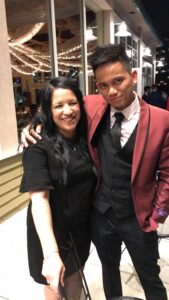
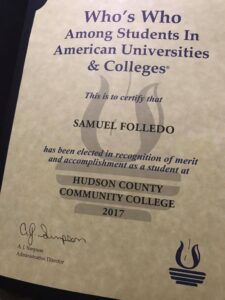
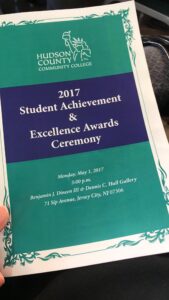
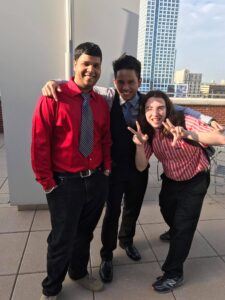
This award served as a powerful validation of our hard work, creativity, and perseverance in the face of challenges. It was a proud moment that highlighted the value of student leadership and the positive impact one can make on a college campus, even with limited resources.
Personal Growth and Leadership
Taking on the role of Computer Science Club President in my last semester proved to be one of the best decisions of my life. It significantly boosted my confidence in coding, public speaking, mentoring, and collaboration. The experience taught me valuable leadership skills and allowed me to build a strong network of connections.
Conclusion
The journey from a coding enthusiast to Club President was challenging but immensely rewarding. It not only improved my technical skills but also provided me with essential soft skills and unforgettable experiences that I will always cherish. Our club’s success, despite the limitations we faced, proved that with passion, creativity, and teamwork, it’s possible to create a thriving community of learners and innovators. The memories we created, from huddling around a single MacBook to organizing campus-wide events, will stay with me long into my professional career.
Links
- Facebook Post: HackRU on April 2017

